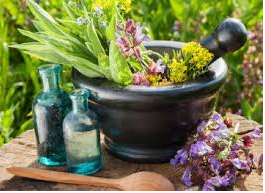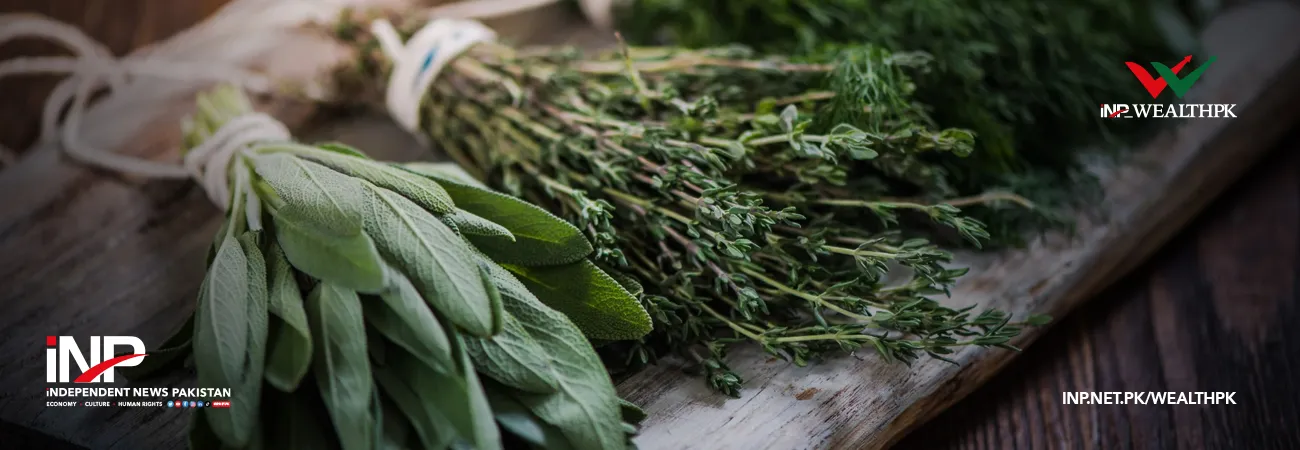INP-WealthPk
Muhammad Luqman
Pakistan is blessed with an exceptional diversity of medicinal and aromatic plants that have long formed the foundation of traditional healing systems such as Ayurvedic and Unani (Hikmat) medicine.
The country hosts more than 600 species of medicinal plants across its varied ecological zones — from the snow-clad northern mountains to the arid southern plains — providing a rich source of raw material for the herbal medicine and nutraceutical industries.

“Currently, more than 700 herbal medicine companies operating in the country are registered with the Drug Regulatory Authority of Pakistan (DRAP). Of these, about 50 companies dominate the market,” Hakeem Muhammad Ahmad Saleemi, President of the National Council of Tibb, told Wealth Pakistan.
He said the most widely used herbs and plants by Unani practitioners (Hakeems) and herbal manufacturers include Liquorice (Malathi), Borage (Gao Zaban), Violet (Banafsha), Sandalwood, Marshmallow (Khatmi), Mallow (Khubazi), Pellitory Root (Aqarqarha), Mace (Javitri), Indian Ginseng (Asgand Nagori), Linseed (Alsi), Chamomile (Babuna), Red Rose (Gulab), Aloe Vera (Kanwar Gandal), Basil (Tulsi), Lemon Grass, Mint (Podina), Fennel (Saunf), Kalonji (Nigella Sativa), Stevia (Honey Plant) and Turmeric (Haldi).
Hakeem Saleemi emphasized that enhanced collaboration among research institutions, the private sector, and regulatory bodies could substantially strengthen Pakistan’s medicine industry. Despite this natural abundance, experts believe the potential of these plants remains largely untapped within the country’s modern pharmaceutical sector. “About 85 percent of the raw material used in Pakistan’s pharmaceutical manufacturing industry is imported,” said Amjad Ali Jawa, former Chairman of the Pakistan Pharmaceutical Manufacturers Association (PPMA).
Talking to Wealth Pakistan, Jawa noted that this reliance on imported ingredients underscores the limited use of indigenous medicinal plants in local pharmaceutical production. However, he pointed out that Pakistan’s herbal and Unani products hold enormous export potential, particularly in the US and European markets, where natural and Ayurvedic therapies are gaining popularity.
“The 100 percent duty imposed by the US on allopathic drugs from several countries, including India, has opened new opportunities for Pakistani herbal products,” he added. Jawa said that since no Pakistani pharmaceutical product has yet received approval from the US Food and Drug Administration (FDA), there exists tremendous scope for herbal and nutraceutical products derived from indigenous plants to enter Western markets. “Nutraceuticals prepared from local herbs and medicinal plants could find strong demand in the US and European Union,” he emphasized.
Experts believe that greater investment in research, cultivation, and processing of local medicinal plants could reduce Pakistan’s dependence on imported materials while unlocking new opportunities for export growth, innovation, and rural income generation. “We are currently developing new varieties of medicinal and aromatic plants to make the fullest use of this natural gift,” said Dr. Muhammad Nawaz, Senior Scientist at the Plant Physiology Section of the Ayub Agricultural Research Institute (AARI), Faisalabad.
Speaking to Wealth Pakistan, Dr. Nawaz said AARI has developed several medicinal plant varieties, two of which — Stevia ‘Honey’ and Tulsi ‘FS-21’ — have already been approved for commercial cultivation. He added that the Pakistan Agricultural Research Council (PARC) and Pakistan Council of Scientific and Industrial Research (PCSIR) were also implementing projects to promote the cultivation of medicinal and aromatic plants nationwide.
According to Dr. Nawaz, the Punjab government has included medicinal plants as non-traditional crops under its High-Value Crops Program, encouraging farmers to grow them commercially on marginal lands. He explained that raw materials for cough syrups, anti-hypertensive medicines, and anti-malarial products can be efficiently produced from locally grown herbs. “By promoting the use of locally sourced raw materials in the pharmaceutical sector, Pakistan can significantly reduce its reliance on imported inputs,” Dr. Nawaz said.
Credit: INP-WealthPk












